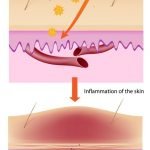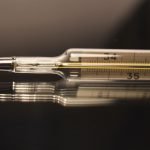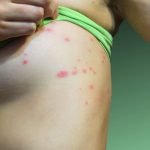“Thyroid, Adrenals, and More”: Reconciling Diverse Information From a Conference
Cheryl Kasdorf, ND
I was excited that the 2011 Arizona Naturopathic Medical Association Fall Continuing Medical Education Conference was titled “Thyroid, Adrenals, and More” because that is a focus of my practice. At the end of the second day, however, from the viewpoint of attendees listening to all the speakers, the general tone was a question about what to do with the information because diverse and some opposing evaluation and treatment strategies had been presented. After additional research and application of my findings to patient care, I present herein how I am reconciling this information in practice.
Agreement
A point of agreement among the speakers was that the results of serum testing of thyrotropin level only do not correlate with patients’ symptoms. Lori Allen, RPh, emphasized the following point: “Despite the clinical sensitivity of TSH, a TSH-centered strategy has inherently two primary limitations. First, it assumes that hypothalamic-pituitary function is intact and normal. Second, it assumes that the patient’s thyroid status is stable, i.e. the patient has had no recent therapy for hypo- or hyperthyroidism.”1 Alan Christianson, NMD, showed that “‘[n]ormal’ thyroid serology is biased to thyroid pathology” (conference notes from the 2011 Arizona Naturopathic Medical Association Fall Continuing Medical Education Conference “Thyroid, Adrenals, and More”; November 12-13, 2011; Tempe, Arizona). I evaluate blood test results only in correlation with patient symptoms and narrow the ranges. I follow the findings of the Turkish study2 on reference range values for thyrotropin level (0.36-1.91 µIU/mL), free triiodothyronine (T3) level (1.99-3.17 pg/mL), and free thyroxine (T4) level (0.75-1.09 ng/dL). In addition, I use reflexometry testing because I find that it correlates with functional thyroid status.
Most speakers at the conference also mentioned heavy metal and xenobiotic disruption of endocrine function, which can account for the great increase in thyroid dysfunction seen today. For this, I use as a primary tool biotherapeutic drainage to clear out the thyroid gland, as well as the whole body at the cellular level to allow restoration of normal physiological functioning.
In addition, the point was emphasized, as Alan Christianson did, that “[t]reatment with thyroid replacement therapy at an early stage of Hashimoto’s can:
- Reduce symptoms
- Slow disease progression
- Reduce the risk of nodules and goiter
- Shrink existing nodules and goiter.”3 (quotation from Dr Chistianson’s conference notes)
Finally, an important point mentioned by many speakers was that thyroid hormone prescription is contraindicated for patients with uncorrected adrenal cortical insufficiency. Because of this, I always evaluate for and treat adrenal dysfunction even if at first I simply use a symptom survey.
Varied Points of View
I enjoyed the reminder that, because our scope of practice is wide, we have many ways to approach patients and many treatment options. Thomas Ballard, ND, questioned the use of hormones, even bioidentical ones, as a first line of treatment. We have naturopathic ways to rejuvenate the whole body, including the endocrine glands, for optimal “identical” hormone levels. For Lori Allen, it is her job to prescribe hormones, yet she states that “[n]othing works as well as the thyroid gland! Kick-start [it]” (conference notes). Jill Stansbury, ND, had the refreshing perspective of the botanical influences on the endocrine system, with detailed actions of herbs such as those that affect thyrotropin levels and the many ways that guggal may benefit thyroid function. The presentation by Kristina Rudgear, MD, on “Thyroid Nodule to Thyroid Cancer” gave specific steps to screen for the 5% to 10% of nodules that are diagnosed as cancerous so that we do not forget about that possibility.
Compounded, Natural, and Synthetic Thyroid Hormones
When it comes to choosing a thyroid hormone therapy, points of view diverge. Alan Christianson will not prescribe any compounded thyroid hormone because capsulated natural dessicated thyroid is “unstandardized post production” and synthetic T3 and T4 are “unstandardarized pre and post production,” and he had an experience with a pharmacy error that was life threatening for the patient. Because 99.9% of any thyroid medication is filler, it is possible to make a mistake with the miniscule amount of thyroid hormone required for a compounded prescription. He believes that the convenience for a customized prescription is not worth the risk.
In contrast, Lori Allen cites the advantages of compounded thyroid hormones over manufactured standardized natural dessicated thyroid and T4 commercial products. Natural dessicated thyroid comes in a ratio of 1:4.2 for T3 to T4, and this does not represent human physiological proportions. As well, because of conversion issues, different patients may do better with more T3. Commercial T4 products “may contain lactose and have variable absorption problems” (conference notes). Compounding pharmacies can formulate slow-release T3, which “decreases side effects” and “decreases suppression of the thyroid gland” (conference notes). Lori Allen states that there is quality assurance through potency testing of the sustained-release T3 with microcrystalline cellulose. She reminds us that “as far as thyroid activities, the main hormone is T3. No T4 receptors have been identified in the body” (conference notes).
Because of this conference, I have reevaluated the use of compounded thyroid hormones. This holds true even when I have exhausted the options of glandular restoration or natural dessicated thyroid and when T4 commercial products with or without T3 are not suitable for the patient.
Basal Body Temperature
Broda Barnes, MD, pioneered the use of basal body temperature (BBT) to evaluate and monitor thyroid function. I find that some patients are initially seen with a report of low BBT and are fixated on that reading. Alan Christianson showed that “BBT can be suppressed by hypothyroidism but that significant temperature suppression is not consistent with early disease, normal variance of BBT [is] greater than Barnes’ estimates, and too many other factors influence BBT” (conference notes).
In 2002, a comprehensive review4 of credible articles from 1935 to 1999 on normal human body temperatures was published. The study showed that the range of normal temperatures was 91.8 to 100.6°F for women and 96.2 to 99.9°F for men. The conclusion of the meta-analysis was that “[t]he ranges of normal body temperature need to be adjusted, especially for the lower values. When assessing body temperature it is important to take place of measurement and gender into consideration.”4(p122)
Thomas Ballard cited studies of “too many other factors” that can alter body temperature. These include insulin, histamine, sleep deprivation, chronic stress, menopause, occult infections, and xenobiotics.
Dana Myatt, NMD, agreed, with her talk “Beyond Broda Barnes” starting with the following summary: “Basal body temperature (BBT) has proven to be an inaccurate and nonspecific method for diagnosing thyroid hypo function. However, some practitioners still believe that many cases of hypothyroid are not diagnosable by conventional laboratory methods and therefore the BBT should be used to guide treatment” (conference notes). So, she does not discard BBT entirely.
Lori Allen included BBT in her list of initial thyroid testing measures. She provided instructions on how to take the BBT.
Iodine and Iodide, the Biggest Controversy
I notice across the board that most practitioners recommend remediating iodine deficiency or adding iodine for thyroid support. The World Health Organization recommends 150 to 200 µg/d of iodine, with a maximum of 1000 µg/d (http://whqlibdoc.who.int/publications/2004/9241546123_chap16.pdf [pp 311 and 314]). Almost all thyroid supplements on the market contain iodine or kelp: have you checked the labels lately? Iodine represents 0.17% to 0.23% of natural dessicated thyroid. One grain, then, contains an average of 120 µg.
The question is how much iodine and in what form? Alan Christianson did a great job explaining this in the August 2010 issue of NDNR in his article “Iodine’s New Paradigm: More…or Less?” Lyn Patrick, ND, brought up in her presentation the controversy by David Brownstein, MD, and Alan R. Gaby, MD [see editorial debate in the Townsend Letter, at http://townsendletter.com/April2006/iodine0406.htm]. Dana Myatt embraced the Brownstein paradigm in her talk and on her Wellness Club website (http://www.drmyattswellnessclub.com), but not in her notes for the conference.
One big distinction must be made. While the most common cause of hypothyroidism worldwide is iodine deficiency,5 the most common cause in the United States is Hashimoto autoimmune condition.6 That fact should alter therapy dramatically if you are concerned with treating the cause. In addition to addressing the immune system, a large difference is in the use of iodine because of its effects. With an active thyroid autoimmune attack, iodine will stimulate the production of thyrotropin, which is undesirable because it will increase thyroid hydrogen peroxide as a byproduct of converting iodine to iodide, causing more thyroid inflammation.7 At first, giving exogenous thyroid hormone will decrease thyrotropin and reduce inflammation. If you give the natural dessicated thyroid, you are giving iodine, which will aggravate the situation; the glandular tissue may also provoke the autoimmune attack. So, this is a case where synthetic hormone is indicated at this point. When thyroid antibodies are decreased, other nutrients to support the thyroid are replenished, and inflammation is quenched; then iodine and iodide in trace amounts may be reintroduced.8 Patients with Hashimoto autoimmune condition do not need to stay away from iodine forever but only for a few months if repair goes as expected. Care must be taken not to overdose beyond the US Department of Agriculture recommendations!
What Is More…
I was also inspired by the March 2012 NDNR article “The ‘Lowe’ Down on Thyroid” (https://ndnr.com/web-articles/anxietydepressionmental-health/the-lowedown-on-thyroid) and look forward to getting my nose in The Metabolic Treatment of Fibromyalgia (McDowell Publishing Co) by Dr John Lowe. I expect the detailed thyroid physiology and therapy considerations to add a further new dimension to my thyroid understanding, resulting in even better treatment outcomes for my patients.
 Cheryl Kasdorf, ND is in her 14th year of private practice in Cottonwood, Arizona. Locally, she is known as the go-to person to get back your get-up-and-go when it is gone, gone, gone. Her postgraduate homeopathy education with Gerard Gueniot, MD, from France, made sense of naturopathic medicine and rendered her treatments more effective. They are complemented by Bowen bodywork and by Ishaya’s Ascension meditation. See drcherylkasdorf.com.
Cheryl Kasdorf, ND is in her 14th year of private practice in Cottonwood, Arizona. Locally, she is known as the go-to person to get back your get-up-and-go when it is gone, gone, gone. Her postgraduate homeopathy education with Gerard Gueniot, MD, from France, made sense of naturopathic medicine and rendered her treatments more effective. They are complemented by Bowen bodywork and by Ishaya’s Ascension meditation. See drcherylkasdorf.com.
References
- Demers LM, Spencer CA. National Academy of Clinical Biochemistry: Laboratory Support for the Diagnosis and Monitoring of Thyroid Disease. http://www.aacc.org/members/nacb/archive/lmpg/thyroiddisease/pages/default.aspx#. Accessed June 14, 2012.
- Erden G, Barazi AO, Tezcan G, Yildirimkaya M. Biological variation and reference change values of TSH, free T3, and free T4 levels in serum of healthy Turkish individuals. Turk J Med Sci. 2008;38(2):153-158. http://journals.tubitak.gov.tr/medical/issues/sag-08-38-2/sag-38-2-10-0706-16.pdf. Accessed June 15, 2012.
- Padberg S, Heller K, Usadel KH, Schumm-Draeger PM. One-year prophylactic treatment of euthyroid Hashimoto’s thyroiditis patients with levothyroxine: is there a benefit? Thyroid. 2001;11(3):249-255.
- Sund-Levander M, Forsberg C, Wahren LK. Normal oral, rectal, tympanic and axillary body temperature in adult men and women: a systematic literature review. Scand J Caring Sci. 2002;16(2):122-128.
- American Thyroid Association. http://www.thyroid.org. Accessed June 14, 2012.
- Amino N. Autoimmunity and hypothyroidism. Bailleres Clin Endocrinol Metab. 1988;2(3):591-617.
- Berne RM, Levy, MN. Physiology. 4th ed. St Louis, MO: Mosby Press; 1998:913-914.
8. Haskell A. Hope for Hashimoto’s. Park City, UT: Advancing Medical Care; 2011.









